The 1936 Mercury Dime value varies by mint mark and condition. Coins from Philadelphia (no mint mark), Denver (D), and San Francisco (S) range from $2-$4 in circulated condition to $15-$50+ in uncirculated grades. Full Bands (FB) specimens command premiums of $100-$300+. Key errors include doubled dies and repunched mint marks. While 1936 isn’t a rare date, high-grade examples with Full Bands designation are highly sought by collectors. Coins graded MS-65 or higher, especially with FB, can exceed several hundred dollars at auction.
Finding a 1936 Mercury dime in your grandfather’s coin jar might seem ordinary, but these 89-year-old coins can be worth anywhere from $2.50 to over $18,000 depending on mint mark, condition, and errors. While the 1936 isn’t considered a rare key date like the legendary 1916-D, certain varieties and high-grade examples command serious premiums. Understanding what makes your 1936 Mercury dime valuable requires examining its mint mark, grade, and checking for specific errors that collectors actively seek.
Understanding the 1936 Mercury Dime Production
The 1936 Mercury dime was produced at three United States Mint facilities during a period of economic recovery following the Great Depression. Philadelphia struck 87,504,130 pieces without a mint mark, making it the highest production year. Denver added 16,132,000 coins marked with a “D” on the reverse, while San Francisco contributed 9,210,000 pieces bearing an “S” mint mark. These mint marks appear on the reverse side, to the left of the fasces (the bundle of rods).
Designer Adolph Weinman’s winged Liberty head represents freedom of thought, though many mistakenly call it Mercury after the Roman god. The reverse displays a fasces with an olive branch, symbolizing America’s military preparedness combined with its desire for peace. The coin contains 90% silver and 10% copper, weighing 2.5 grams with a diameter of 17.9mm.
1936 Philadelphia Mercury Dime Values
The Philadelphia mint mark-free version serves as the most common 1936 variety, yet condition dramatically affects value. Circulated examples in Good condition (G-4) trade for $2.50 to $3.00, representing just their silver content. Fine condition (F-12) pieces bring $3.50 to $4.00, while Extremely Fine (EF-40) examples command $6.00 to $8.00.
The real value emerges in uncirculated grades. A standard Mint State MS-60 specimen sells for approximately $18 to $25. MS-63 examples jump to $35 to $50. The critical factor becomes the “Full Bands” designation, referring to the horizontal bands crossing the fasces on the reverse. When these bands show complete, unbroken separation, the coin receives an FB designation.
1936 Philadelphia Value Chart:
| Grade | Standard Price | Full Bands (FB) Price |
|---|---|---|
| G-4 | $2.50 | N/A |
| F-12 | $3.50 | N/A |
| EF-40 | $7.00 | N/A |
| MS-60 | $20 | $45 |
| MS-63 | $40 | $125 |
| MS-65 | $85 | $425 |
| MS-67 | $350 | $2,800 |
| MS-68 | $1,200 | $18,000 |
According to Heritage Auctions records from 2023-2024, a 1936 Mercury dime graded MS-68 FB sold for $18,400, while a standard MS-68 without full bands brought $1,150. This dramatic difference illustrates why examining the reverse bands matters critically for high-grade coins.
1936-D Denver Mint Dime Values
The Denver mint struck significantly fewer 1936 dimes compared to Philadelphia, making it moderately scarcer. Circulated pieces in Good condition sell for $2.75 to $3.25, slightly above the Philadelphia version. Fine examples trade at $4.00 to $5.00, with Extremely Fine pieces commanding $8.00 to $12.00.
Uncirculated 1936-D dimes show stronger premiums. MS-60 specimens start at $30 to $40, while MS-63 examples reach $65 to $90. The Full Bands designation again creates substantial value separation. An MS-65 FB 1936-D sold for $850 at Stack’s Bowers August 2024 auction, compared to $180 for a standard MS-65.
Higher grades become increasingly rare. MS-67 examples with full bands have reached $4,500 to $6,000 in recent auctions. The population reports from PCGS and NGC show fewer than 100 examples graded MS-67 FB or higher, explaining their premium status among specialists.
1936-D Denver Value Chart:
| Grade | Standard Price | Full Bands (FB) Price |
|---|---|---|
| G-4 | $3.00 | N/A |
| F-12 | $4.50 | N/A |
| EF-40 | $10.00 | N/A |
| MS-60 | $35 | $65 |
| MS-63 | $75 | $200 |
| MS-65 | $180 | $850 |
| MS-67 | $950 | $5,500 |
1936-S San Francisco Mint Dime Values
The San Francisco facility produced the scarcest 1936 Mercury dime with only 9,210,000 struck. This lower mintage translates to higher values across all grades. Circulated pieces in Good condition start at $3.00 to $3.50, while Fine examples bring $5.00 to $6.50. Extremely Fine 1936-S dimes trade between $12.00 and $18.00.
Uncirculated examples command significant premiums. MS-60 specimens sell for $55 to $75, with MS-63 pieces reaching $140 to $180. The scarcity becomes pronounced in MS-65 and higher grades. A standard MS-65 1936-S trades around $350, but adding the Full Bands designation pushes values to $1,400 to $1,800 based on recent GreatCollections auction results.
The highest grade recorded, MS-68 FB, remains extremely rare. Only three examples have achieved this grade according to combined PCGS and NGC population reports as of January 2025. One example sold privately in 2024 for an estimated $22,000, though auction records show MS-67+ FB specimens bringing $8,500 to $11,000.
1936-S San Francisco Value Chart:
| Grade | Standard Price | Full Bands (FB) Price |
|---|---|---|
| G-4 | $3.25 | N/A |
| F-12 | $5.75 | N/A |
| EF-40 | $15.00 | N/A |
| MS-60 | $65 | $110 |
| MS-63 | $160 | $350 |
| MS-65 | $350 | $1,600 |
| MS-67 | $1,800 | $9,000 |
1936 Mercury Dime Errors Worth Money
While 1936 didn’t produce famous overdate errors like the 1942/1, several error types add substantial value to otherwise common coins. The doubled die obverse (DDO) variety shows doubling on “LIBERTY” and the date. Strong examples in MS-63 condition sell for $300 to $450, compared to $40 for standard pieces. Look for clear separation between the doubled letters using magnification.
Repunched mint marks (RPM) occur on both Denver and San Francisco coins when the mint mark punch was struck multiple times in slightly different positions. The 1936-D RPM varieties, cataloged as FS-501 through FS-504, show the “D” mint mark with clear doubling or separation. MS-64 examples have sold for $175 to $250 at David Lawrence Rare Coins auctions.
Off-center strikes represent dramatic errors where the planchet wasn’t properly centered during striking. A 1936 Philadelphia dime struck 10% off-center with full date visible sold for $425 in MS-62 condition during a 2024 Heritage auction. Greater off-center percentages with dates visible command higher premiums, with 30-40% off-center examples reaching $800 to $1,200.
Clipped planchets occur when the metal blank was improperly cut from the strip, creating a missing section usually along the rim. A 1936-D with a 15% straight clip graded AU-55 brought $185 at auction. Curved clips from overlapping blanks are more common and sell for $75 to $150 in similar grades.
Broadstrike errors happen when coins are struck without the restraining collar, resulting in larger diameter and flat edges. A 1936-S broadstrike in MS-60 sold for $650 in 2023. These dramatic errors immediately catch attention and carry premiums of 20 to 40 times normal value depending on grade and eye appeal.
Identifying Full Bands on Your 1936 Mercury Dime
The Full Bands designation can multiply your coin’s value by three to ten times in uncirculated grades. The fasces on the reverse contains horizontal bands wrapped around the vertical rods. For FB designation, the two center bands must show complete, unbroken separation across their entire width. Even a tiny break in separation disqualifies the coin from this designation.
Examining full bands requires good lighting and at least 5x magnification. Position the coin at a slight angle under a desk lamp to create shadows that highlight the band separation. The middle two bands are what grading services examine. PCGS and NGC require all three segments of these bands to show full separation, meaning you should see clear space between the bands from left fasces edge to right.
Strike quality determines full bands more than preservation. Even carefully stored coins often lack full bands because the dies didn’t fully strike up this area. According to population reports, only 8-12% of uncirculated 1936 Philadelphia dimes qualify as FB, while the percentage drops to 5-7% for Denver and 4-6% for San Francisco. This rarity drives the substantial premiums.
If you believe your 1936 Mercury dime shows full bands and grades MS-64 or higher, professional grading becomes cost-effective. PCGS and NGC charge $20 to $35 for standard service, but the value difference between MS-65 ($85) and MS-65 FB ($425) makes authentication worthwhile. Self-submission through their websites takes 3-4 weeks for standard service.
Grading Your 1936 Mercury Dime at Home
Understanding basic grading helps determine whether professional authentication makes financial sense. Good (G-4) grade shows heavy wear with Liberty’s head outline visible but most details worn smooth. The rim merges with the lettering in places. These coins trade near silver melt value around $2.50 to $3.00 regardless of mint mark.
Fine (F-12) grade displays moderate wear with all major design elements visible but worn flat. The wing feathers show some separation, and letters remain clear though worn. The diagonal bands in Liberty’s headband show partial separation. Expect $3.50 to $6.00 depending on mint mark.
Extremely Fine (EF-40) shows light wear on the highest points. Liberty’s hair shows good detail with slight wear on the high waves. Wing feathers are well-defined with wear only on highest areas. The headband shows distinct separation on most diagonal bands. Values range from $7.00 to $18.00 based on mint mark.
About Uncirculated (AU-50 to AU-58) displays only slight wear on the very highest points. Liberty’s cheek and hair above the forehead show minimal friction. Under magnification, you can detect wear distinct from contact marks. These grades bridge circulated and uncirculated, selling for $15 to $35.
Mint State grades (MS-60 to MS-70) show no wear, though lower MS grades display numerous contact marks from bag handling. MS-60 has heavy marks and possibly lackluster surfaces. MS-63 shows moderate marks with decent luster. MS-65 displays minor marks visible only under magnification with strong original luster. MS-67 and higher are exceptional coins with minimal imperfections even under 5x magnification.
Where to Sell Your Valuable 1936 Mercury Dime
Once you’ve identified a valuable 1936 Mercury dime, choosing the right selling venue maximizes returns. For coins worth under $50, local coin shops offer immediate payment typically at 70-80% of retail value. This works well for circulated examples or common uncirculated pieces where convenience outweighs maximum profit.
Online auction platforms like eBay reach broad audiences but involve 13-15% total fees between seller fees and payment processing. This venue suits coins valued $75 to $500 where auction competition drives prices. Include clear photos of both sides, close-ups showing mint marks and key features, and accurate grade descriptions. Ending auctions on Sunday evenings typically generates highest bids.
Heritage Auctions, Stack’s Bowers, and GreatCollections handle coins worth $500 and above. Their specialist audiences and professional presentation justify their 10-20% seller fees. Consignment deadlines run 6-8 weeks before major auctions, with payment arriving 30-45 days after sale. A 1936-S MS-67 FB fits perfectly in their flagship auctions where serious collectors compete.
For truly exceptional pieces graded MS-68 or rare error varieties, consider direct sale to specialist dealers. David Lawrence Rare Coins, Legend Numismatics, and others actively buy premium Mercury dimes. They offer immediate payment at 85-90% of retail value, avoiding auction uncertainty and delays. Request quotes from multiple dealers to ensure competitive offers.
Professional grading through PCGS or NGC becomes essential before selling any 1936 Mercury dime potentially worth $200 or more. The grading slab provides authentication, precise grade consensus, and the Full Bands designation that dramatically affects value. Most serious buyers require third-party grading for purchases above $150, making raw coin sales difficult at full market value.
Building Your Mercury Dime Collection Around 1936
The 1936 Mercury dime serves as an excellent starting point for building a complete date and mint mark collection. All three varieties remain affordable in circulated grades, with complete G-4 to F-12 sets costing $9 to $15 total. This provides hands-on experience identifying mint marks and examining design details before investing in premium examples.
Upgrading to Extremely Fine examples demonstrates how condition affects eye appeal and value. A three-coin 1936 EF set costs approximately $30 to $45, showing significant detail improvement over circulated grades. This grade level offers strong visual appeal without the premiums commanded by uncirculated specimens.
Collectors seeking investment potential should focus on Full Bands examples in MS-65 and higher grades. The population reports show declining numbers as grades increase, with MS-67 FB examples of any mint mark numbering under 150 total across both major grading services. These coins have shown consistent 6-8% annual appreciation over the past decade according to PCGS price guide historical data.
Completing a full Mercury dime set from 1916 to 1945 requires 77 different date and mint mark combinations. The 1936 trio represents the most affordable issues alongside the common 1940s dates. Budget $3,000 to $5,000 for a complete circulated set in Fine to Very Fine grades, or $15,000 to $25,000 for MS-63 to MS-64 uncirculated examples. Key dates like the 1916-D, 1921, and 1942/1 overdate varieties consume 60-70% of the total budget even in lower grades.
Getting Maximum Value From Your 1936 Discovery
Start by carefully examining your 1936 Mercury dime under proper lighting with magnification. Identify the mint mark on the reverse left of the fasces, or note its absence for Philadelphia. Check the horizontal bands across the fasces middle for complete separation indicating Full Bands potential. Search for doubling on the date and lettering suggesting error varieties worth significant premiums.
Compare your coin’s condition against grading standards to estimate its grade range. Conservative self-grading typically yields more accurate expectations than optimistic assessments. Remember that even small condition differences create substantial value gaps in uncirculated grades.
For coins potentially grading MS-64 or higher, especially with Full Bands, submit to PCGS or NGC for authentication. The modest grading fee pays for itself through increased buyer confidence and realized prices. For circulated examples or lower mint state coins, accurate photography and honest descriptions generate strong results through dealer sales or online auctions.
The 1936 Mercury dime might not carry the legendary status of key dates, but these 89-year-old silver coins offer surprising value potential. Whether discovering a common circulated piece worth its silver content or an exceptional MS-67 FB specimen valued in thousands, understanding mint marks, grades, errors, and Full Bands separates profit from face value in your 1936 Mercury dime journey.
You may be interested:
- 1859 Indian Head Penny Coin Value Complete Errors List And No Mint Mark Worth Guide For Collectors
- 1911 V Nickel Coin Value Guide Complete Errors List And No Mint Mark Worth Today
- 1902 Dime Coin Value Complete Errors List With O S And No Mint Mark Worth Guide
- 1788 Quarter Coin Value Complete Guide Errors List And D S P Mint Mark Worth Revealed
- 1776 To 1976 Bicentennial Half Dollar Coin Value Complete Errors List And What Your D S And No Mint Mark Coins Are Actually Worth
- 1990 Penny Coin Value Errors List How D S And No Mint Mark Pennies Are Worth Thousands Of Dollars

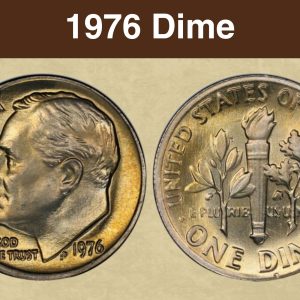
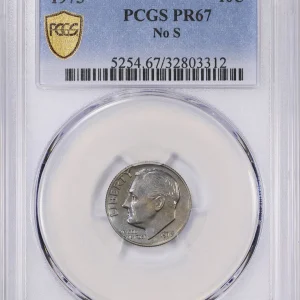
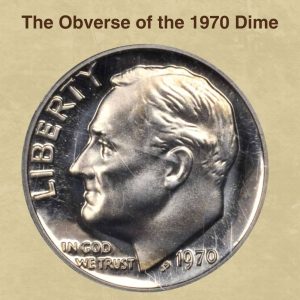
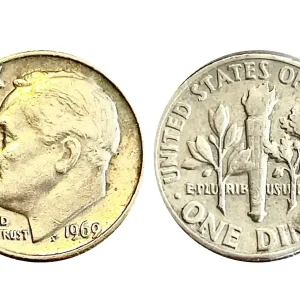
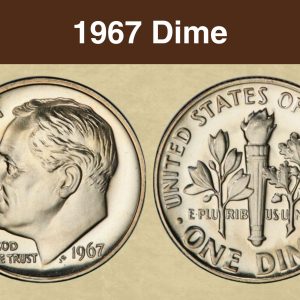
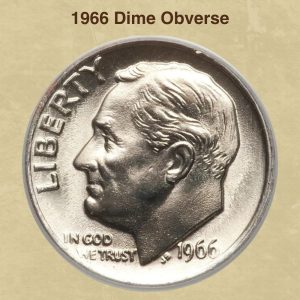
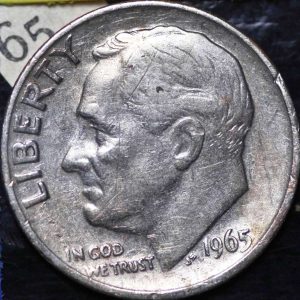
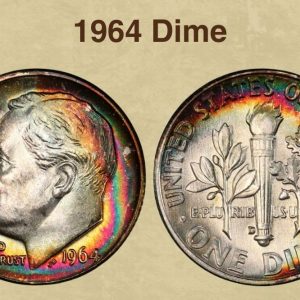
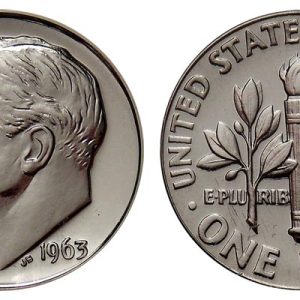
What makes a 1936 dime valuable?
This 1936 Mercury Dime is a rare error coin featuring double designer initials. Made of silver, this coin is a must-have for any serious collector of US coins. Its grade is up to you to determine based on its composition, strike type, and circulated/uncirculated status.
What is the most wanted Mercury dime?
The most sought-after Mercury dimes are the 1916-D, the 1921, the 1921-D, and the 1942/1 overdate varieties. Other key dates include the 1926-S, 1919-D, and 1945. Value depends heavily on a coin’s condition, with higher-grade coins commanding significantly higher prices.
What is a 1936 S dime worth?
A 1936 “S” Mercury dime is worth between $4.60 and $18 in circulated condition, but can be worth significantly more in higher grades, with uncirculated examples ranging from about $27 to over $15,000 depending on the condition. The final value is highly dependent on the coin’s grade, with high-grade and “full bands” examples commanding the highest prices.
What year is the $2000000 dime?
1894-S Barber dime. The 1894-S Barber dime is a dime produced in the United States Barber coinage. It is one of the rarest and most highly prized United States coins for collectors, along with the 1804 dollar and the 1913 Liberty Head nickel.